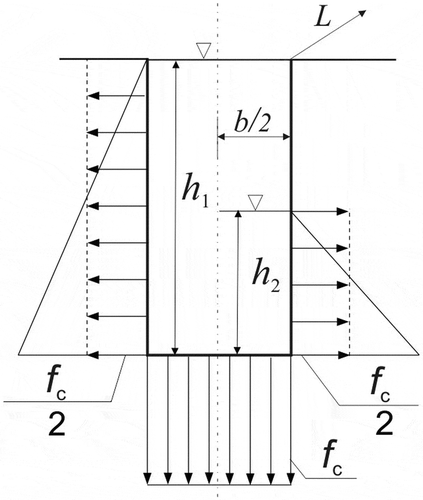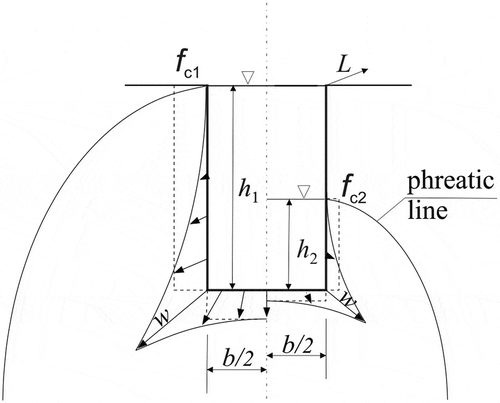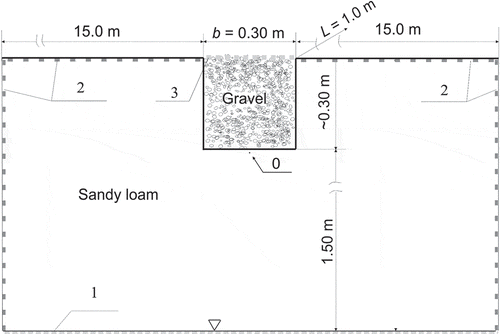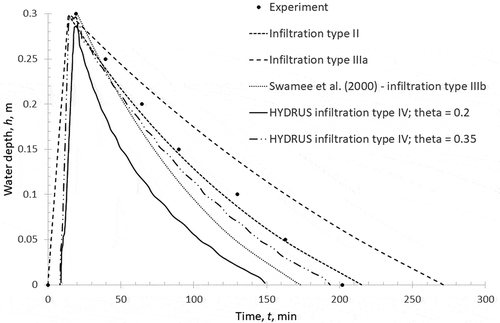Figures & data
Table 1. Comparison of design criteria for infiltration trenches of rectangular cross-section. hmax: maximum water depth, H: separation between trench bottom and GW level.
Figure 1. Rectangular cross-section of infiltration trench of width b and length L showing the infiltration concept of Type II at two phases: 1 – the left half (filling), and 2 – the right half (emptying).

Figure 2. Scheme showing the infiltration concept of Type IIIa and distribution of infiltration rate fc along the wetted perimeter of a rectangular trench.

Table 2. Physical parameters of soils in the infiltration trench.
Figure 6. Velocity distribution (cm min−1) at the end of water inflow to the trench at initial soil moisture: (a) θ = 0.2 and (b) θ = 0.35.

Figure 7. Relative mean infiltration rates fc/Ks versus relative water depth h/b: according to DWA (Deutsche Vereinigung für Wasserwirtschaft, Abwasser und Abfall) (Citation2005). Dotted line: Iz = 1, dashed line: Type II, solid line: Type IIIb.




